A general jewellery bibliography
If you want to learn about Western jewellery history, there are some great books to get going with. Jewellery is often included in exhibition catalogues or books on wider art historical subjects but this general jewellery bibliography concentrates on fairly recently published books which are uniquely concerned with jewellery.
Older books can be hard to find but digitised or library copies are often available. Here are some of the books which I find particularly useful and enjoyable.
General jewellery books
Jewels and jewellery: Clare Phillips
V&A/ Thames and Hudson, 2019

This book, now in its third edition, is a great introduction to the history of jewellery from the middle ages up to contemporary craft makers.
It serves as both an introduction to the Victoria and Albert Museum jewellery collection and to the study of Western jewellery. It’s beautifully illustrated and introduces the history of jewellery design chronologically and thematically, covering particular makers or types of objects as well as wider art movements.
7000 years of jewellery: Hugh Tait

British Museum Press, first published in 2007 and reissued in 2017.
This is a wide-ranging survey of jewellery, from across the world. It covers objects as varied as Egyptian necklaces, Celtic torcs, South American gold masks, Renaissance pendants and Art Nouveau buckles. Featuring over 400 photographs and essays by British Museum curators, it’s a great starting point for the jewellery enthusiast.
Jewelry from antiquity to the present: Clare Phillips
Thames and Hudson, 1996
This is a shortish book in the ‘World of Art’ series. It offers an overview of jewellery, as the title suggests, from antiquity to the late twentieth century. It’s reasonably well illustrated with objects from collections around the world and gives a great introduction to jewellery design and history.
Jewelry: the body transformed
Yale University Press, 2018
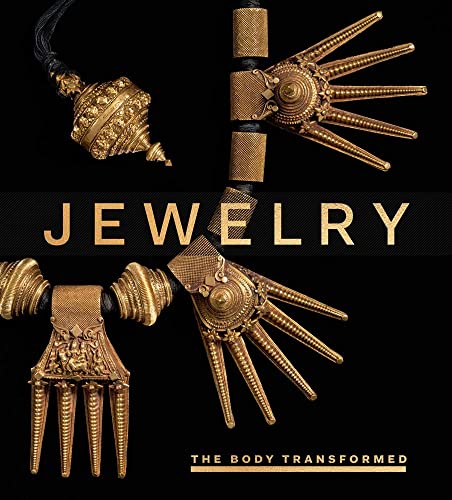
This is the catalogue of an exhibition held at the Metropolitan Museum of Art, New York. It’s a cross cultural study of jewellery, bringing together objects from the Met’s exceptional collections. The exhibition and book look at how jewellery can transform the body – by decorating, consecrating, transforming and distorting it. It’s an original way to approach the subject and is fabulously illustrated with images of jewels, paintings and sculptures from around the world.
Jewellery in Britain: 1066-1837- Diana Scarisbrick
Michael Russell, 1994
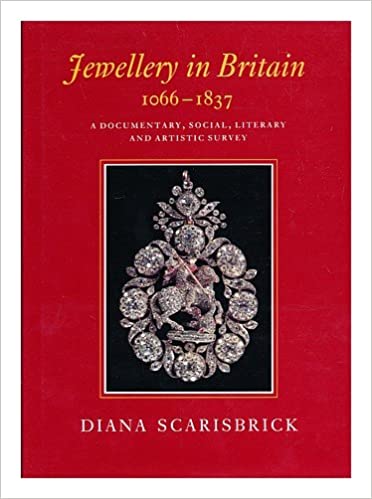
Diana Scarisbrick is the doyenne of British jewellery history. ‘Jewellery in Britain 1066-1837’ tells the story of British jewellery design and history from the Norman Conquest to the coronation of Queen Victoria in just under 500 pages. It looks at the social and historial context of jewellery in the middle ages, Tudor and Stuart periods and under the Georgians as well as offering a detailed look at particular types of jewellery.
Jewellery Matters – Marjan Unger and Suzanne van Leeuwen
NAI, 2017
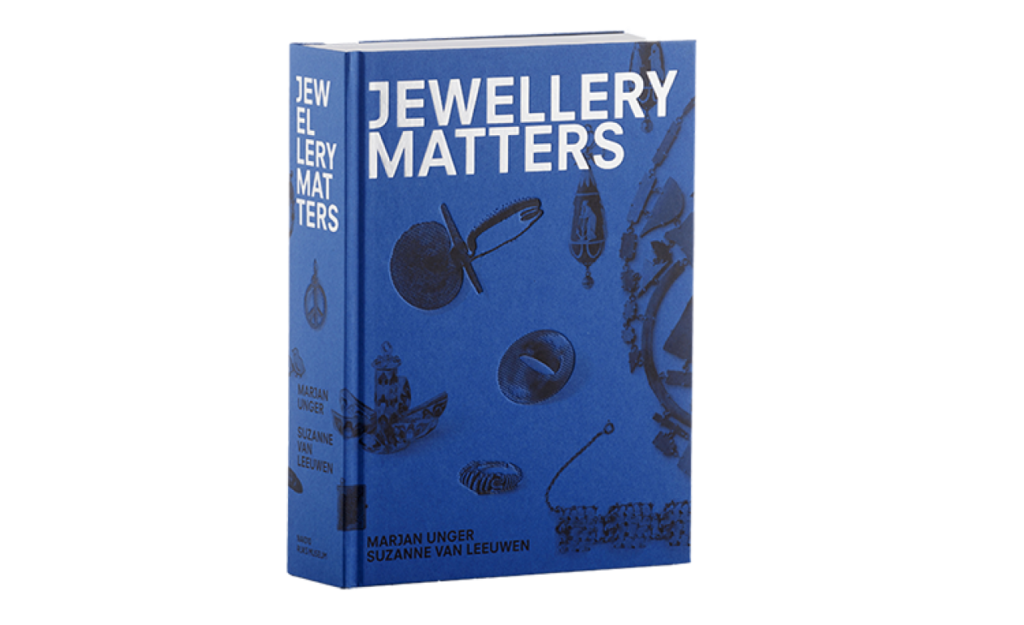
In ‘Jewellery Matters’, Marjan Unger and Suzanne van Leeuwen draw upon the collections of the Rijksmuseum in Amsterdam to look at jewellery from Byzantium to the present. They examine the driving forces behind the creation of jewellery with the aid of beautifully photographed objects shown to scale.
Early jewellery
Greek Gold: Jewelry of the Classical World –Dyfri Williams and Jack Ogden
New York: Abrams, 1994
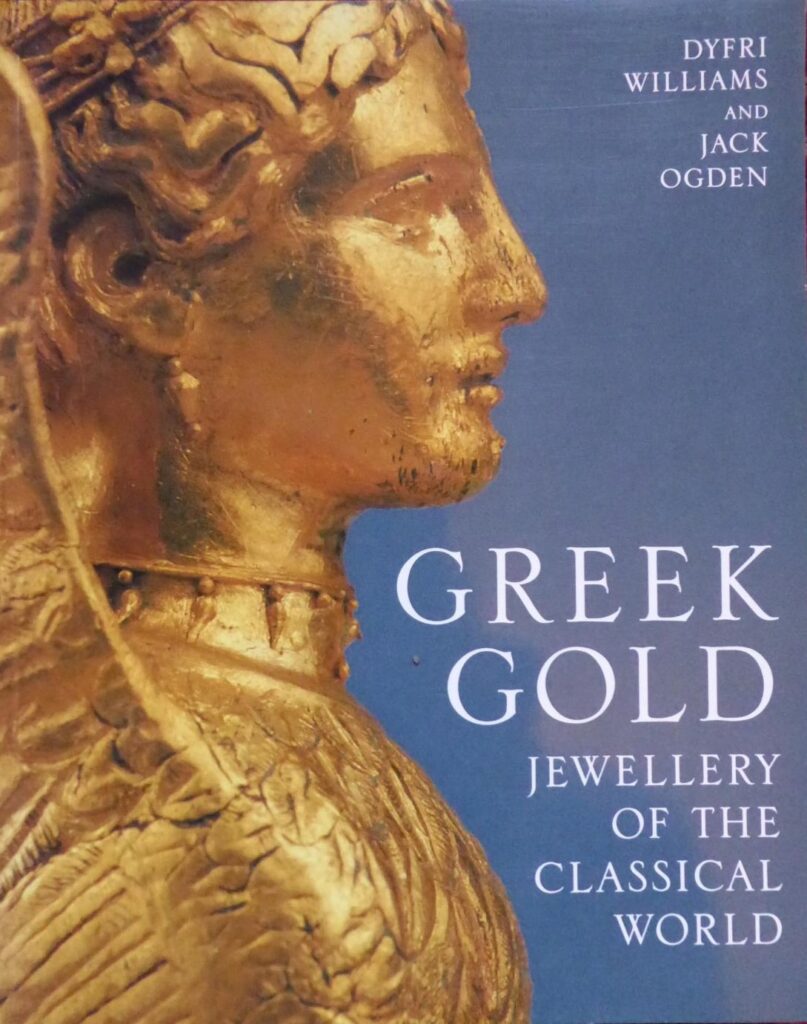
This book brings together the fabulous gold jewellery made in classical Greece and now in the collections of the British Museum, the Metropolitan Museum of Art, New York and the State Hermitage Museum in St Petersburg. It includes technical analysis and scanning electron microphotographs with a discussion of each piece’s iconography and use.
Ancient Egyptian Jewelry- Carol Andrews
British Museum Press, new edition 1996
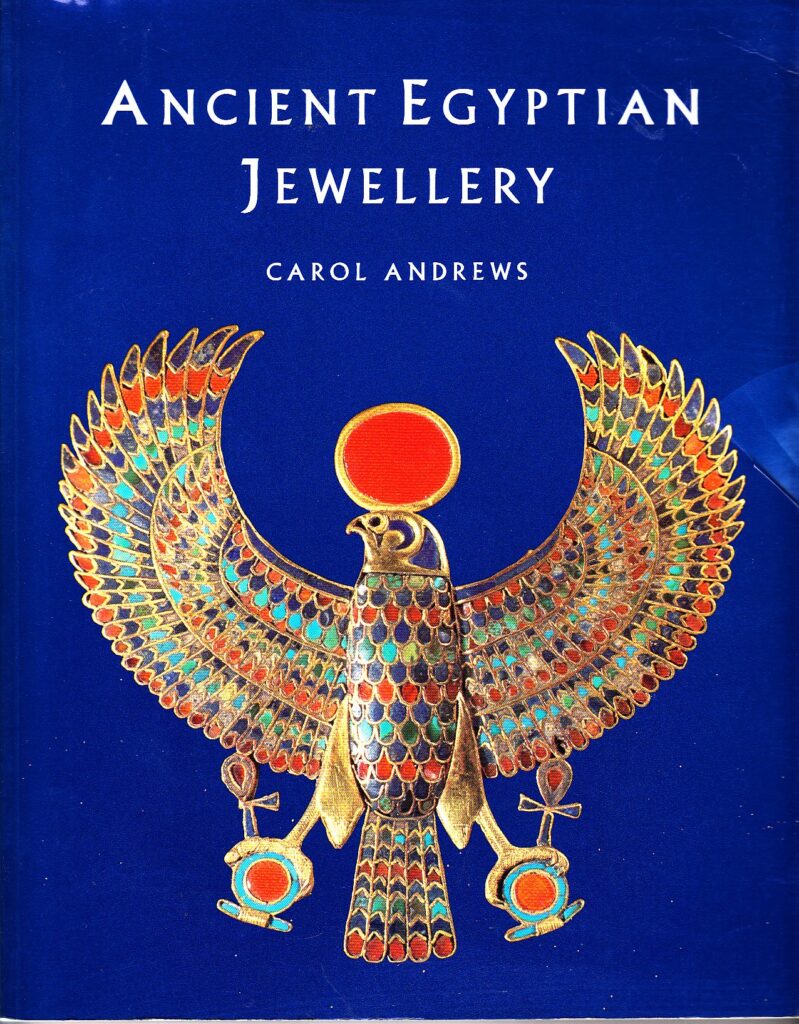
This book offers a great overview of ancient Egyptian jewellery, based on collections in Cairo, London, Munich and New York. It’s well illustrated and gives clear explanations of the social, amuletic and political functions of jewellery under the Pharaohs.
It’s an updated version of a classic text but holds up well.
Medieval jewellery
Medieval jewellery in Europe: 1100-1500 – Marian Campbell
Victoria and Albert Museum, 2009
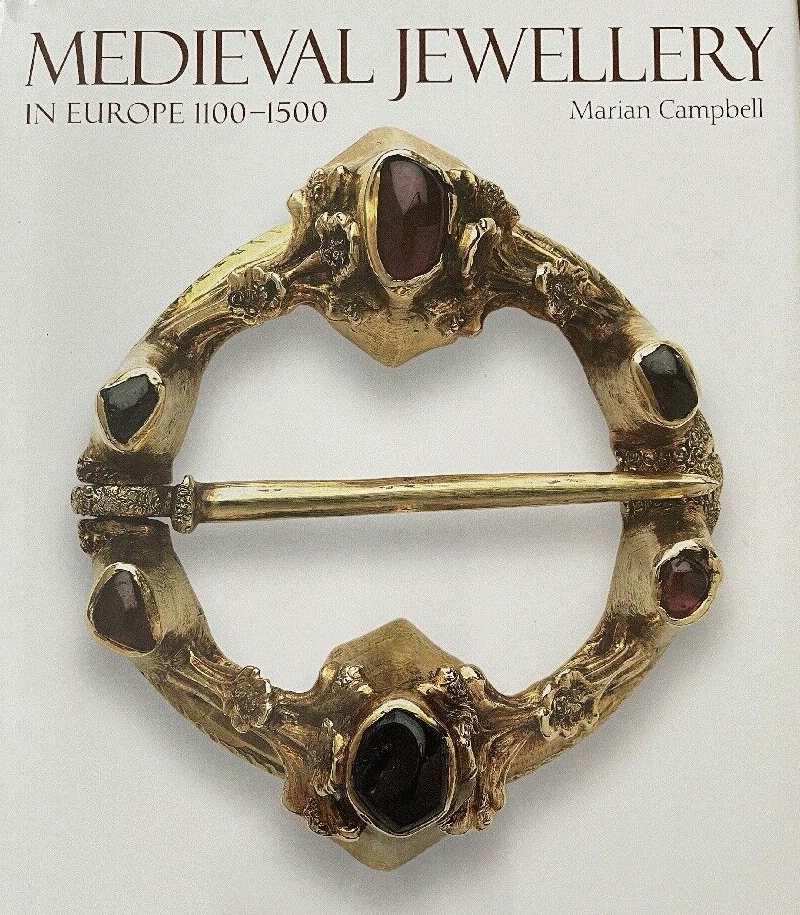
This is quite a short but very readable book on jewellery from the early middle ages to the beginning of the Renaissance. It’s largely based on the collections of the Victoria and Albert Museum, supported by images from other public and private collections. It unites interesting social history with an account of the development of medieval jewellery.
Mediaeval European Jewellery: Ronald W. Lightbown
Victoria and Albert Museum, 1992
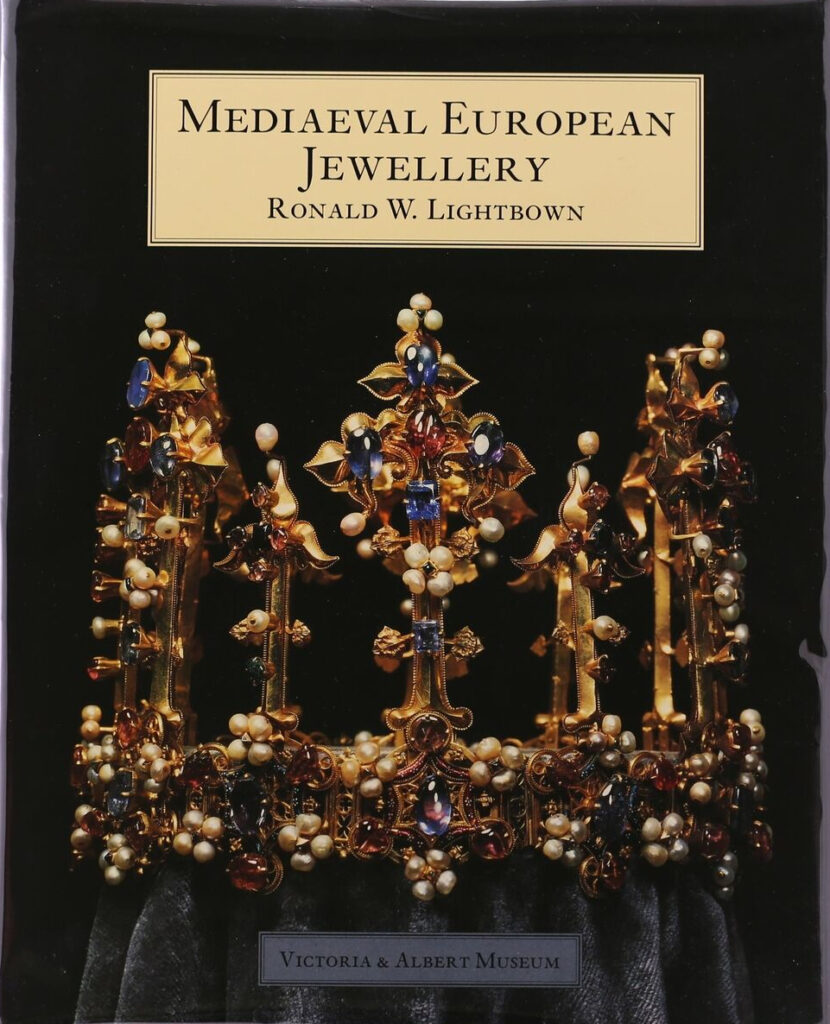
Ronald Lightbown’s mighty tome on medieval European jewellery is both a comprehensive account of jewellery and a catalogue of the collections of the Victoria and Albert Museum, with the notable exception of rings. It’s supported by a vast amount of archival research and covers the development of medieval jewellery with chapters on individual types of jewels such as head-jewels, necklaces and so forth.
It’s extraordinarily expensive second-hand but can generally be found in academic libraries.
Renaissance and early modern jewellery
Renaissance jewellery is probably one of the most difficult areas of study. Very little original jewellery survives and much of what we know comes from paintings and inventories. However, there are some good books to read on the subject, with the caveat that scholarship on this area is still changing and developing.
Princely Magnificence: Court Jewels of the Renaissance, 1500-1630
Victoria and Albert Museum, 1980.
This is the catalogue of an exhibition held in 1980. It’s an older book without the quality of colour images which a more modern publication offers but is still a useful resource. One problem with Renaissance studies is that jewellery of this period was frequently faked in the nineteenth century. As research progresses, some jewels previously considered genuine have been disqualified and others reinstated.
Renaissance jewellery – Yvonne Hackenbroch
Metropolitan Museum of Art, 1979
Although this book is now almost fifty years old, it’s still a useful resource on Renaissance jewellery. It covers a wide range of objects and is supported by excellent archival research. Yvonne Hackenbroch has also written on hat jewels in ‘Enseignes: Renaissance hat jewels’ (1996).
‘Jewels of the Renaissance (Legends)’ was published posthumously with Gonzague Saint Bris. It picks up the study of Renaissance jewels through surviving objects, paintings and sculpture.
Tudor and Jacobean Jewellery – Diana Scarisbrick
Tate Gallery Publications, 1996
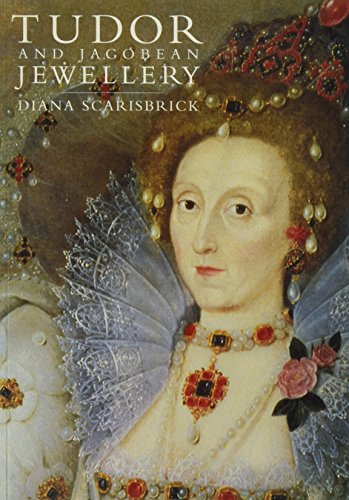
This is another slim book, coming in at just over 100 pages, but it covers a wide range of Tudor and Jacobean jewels. It’s nicely illustrated, using portraits to fill the gaps where historic jewels no longer survive.
The Cheapside Hoard: London’s Lost Jewels– Hazel Forsyth
Philip Wilson, 2013
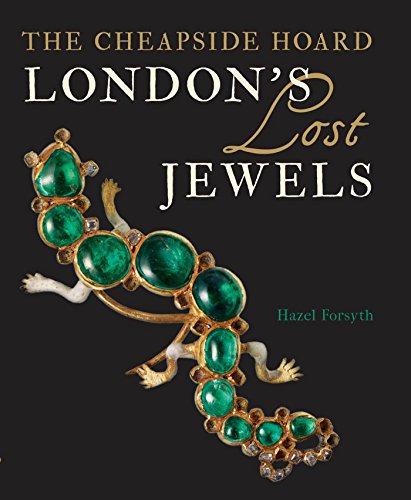
The Museum of London’s exhibition of the Cheapside hoard of 17th century jewels was one of the most memorable jewellery displays in recent years. It brought together an exceptional collection of gem-set and enamelled jewellery, found in a building site in the early twentieth century. The book is an account of the hoard’s history, of the trade in jewellery in early modern England and investigates the use of particular gemstones and types of jewellery. It includes a great deal of original archival research and fabulous photography.
Eighteenth century jewellery
Eighteenth century jewellery has received surprisingly little attention. Although it is covered in more general jewellery books, there are few books specifically dedicated to it.
Georgian Jewellery 1714-1839- Ginny Redington Dawes and Olivia Collings
ACC Art Books, 2007 and 2018
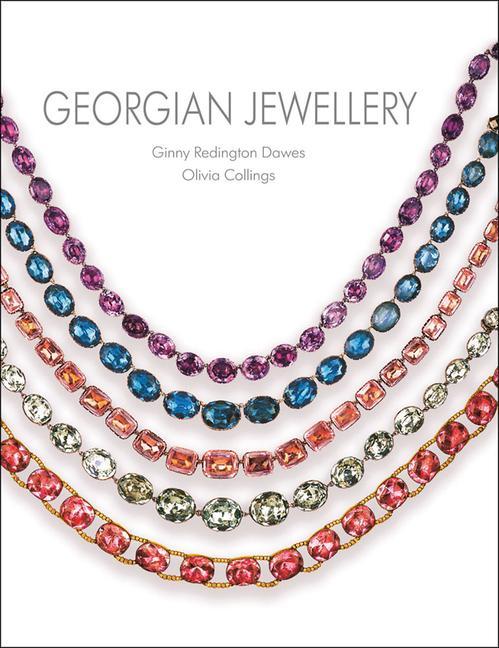
‘Georgian Jewellery’ covers jewellery in Britain during the reign of kings George I to IV. It’s beautifully illustrated and organised according to jewels worn in the day and in the evening, followed by chapters on love and mourning jewellery. The text is interesting and readable, aimed at a general audience rather than an academic one. There is a bibliography but no footnotes or further references.
The nineteenth century
The nineteenth century offers the largest number of surviving historic jewels and has been very fully researched.
Jewellery in the age of Queen Victoria: a mirror to the world – Charlotte Gere and Judy Rudoe
British Museum Press, 2010
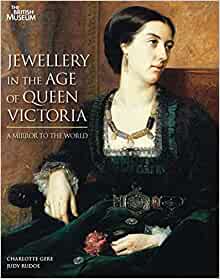
‘Jewellery in the age of Queen Victoria’ is a monumental work in every sense of the word. With 550 pages and 500 illustrations, it’s a compendium of every aspect of Victorian jewellery history, from royal jewels to those made by commercial Birmingham firms. It’s based on the collections of the British Museum but enriched with contemporary adverts, paintings, photographs and images from other collections. It’s the summary of a lifetime of research and brings together social history, archival and object research in a superbly readable text.
Victorian Jewellery – Peter Hinks
Studio Editions, 1991
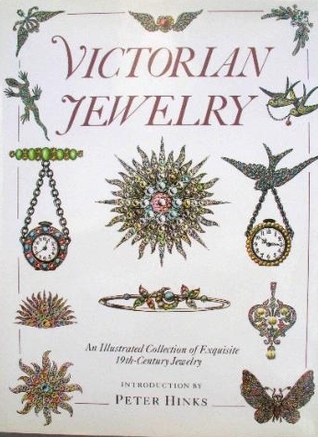
The nineteenth century was the age of mass production and commercialisation in jewellery. Peter Hinks’ ‘Victorian Jewellery’ is based on the catalogues of major jewellery firms. Reprints of plates from the catalogues of firms like the Goldsmiths and Silversmiths Company Ltd, Streeters and Co. offer a comprehensive overview of middle class British and American jewellery between 1875 and 1905.
Artists’ Jewellery: Pre-Raphaelite to Arts and Crafts – Charlotte Gere and Geoffrey C. Munn
ACC, 1989
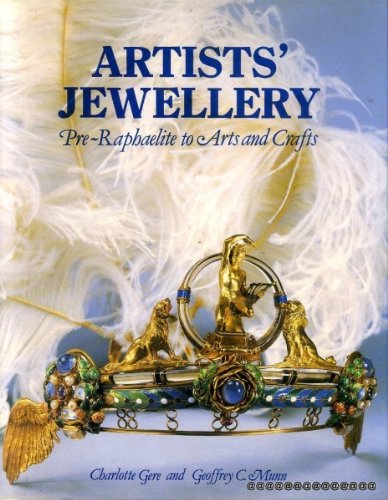
‘Artists’ Jewellery’ is the perfect counterpart to Peter Hinks’ collection of commercial jewellery. It covers jewellery made by artist and designers in the arts and crafts tradition. It brings together jewels from public and private collection together with preparatory drawings, designs and the stories of their creation in a fascinating and accessible way.
Jewelry and Metalwork in the Arts and Crafts tradition – Elyse Zorn Karlin
Schiffer, 1993
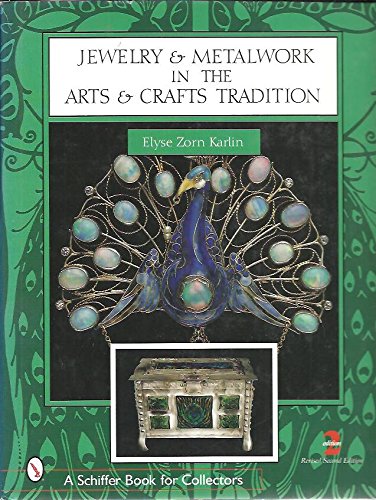
Elyse Zorn Karlin’s 1993 book on Arts and Crafts jewellery and metalwork is a very reliable source of information on makers and hallmarks, covering the most famous firms and jewellers as well as lesser names. The quality of the images is not as good as a more modern publication but it makes up for this through the comprehensive nature of its coverage and the depth of research evidenced in the text.
Twentieth century jewellery
Twentieth century jewellery books are plentiful, including general surveys as well as books on individual firms, makers and art movements. These books provide a jumping off point for the general readers.
Designers & jewellery 1850-1940 – Helen Ritchie
PWP/ Fitzwilliam Museum, Cambridge, 2018
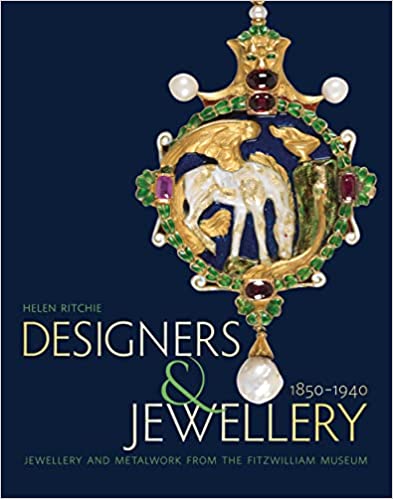
This book is the companion to a 2018 exhibition at the Fitzwilliam Museum. It covers silver and metalwork as well as jewellery and spans the nineteenth and twentieth century through the work of designer/ makers such as Henry Wilson, C.R. Ashbeen and companies like Hunt and Roskell and Phillips. It’s beautifully illustrated and includes a full bibliography, glossary and footnotes.
Maker and Muse: women and early twentieth century art jewelry- edited by Elyse Zorn Karlin
The Monacelli Press, 2015
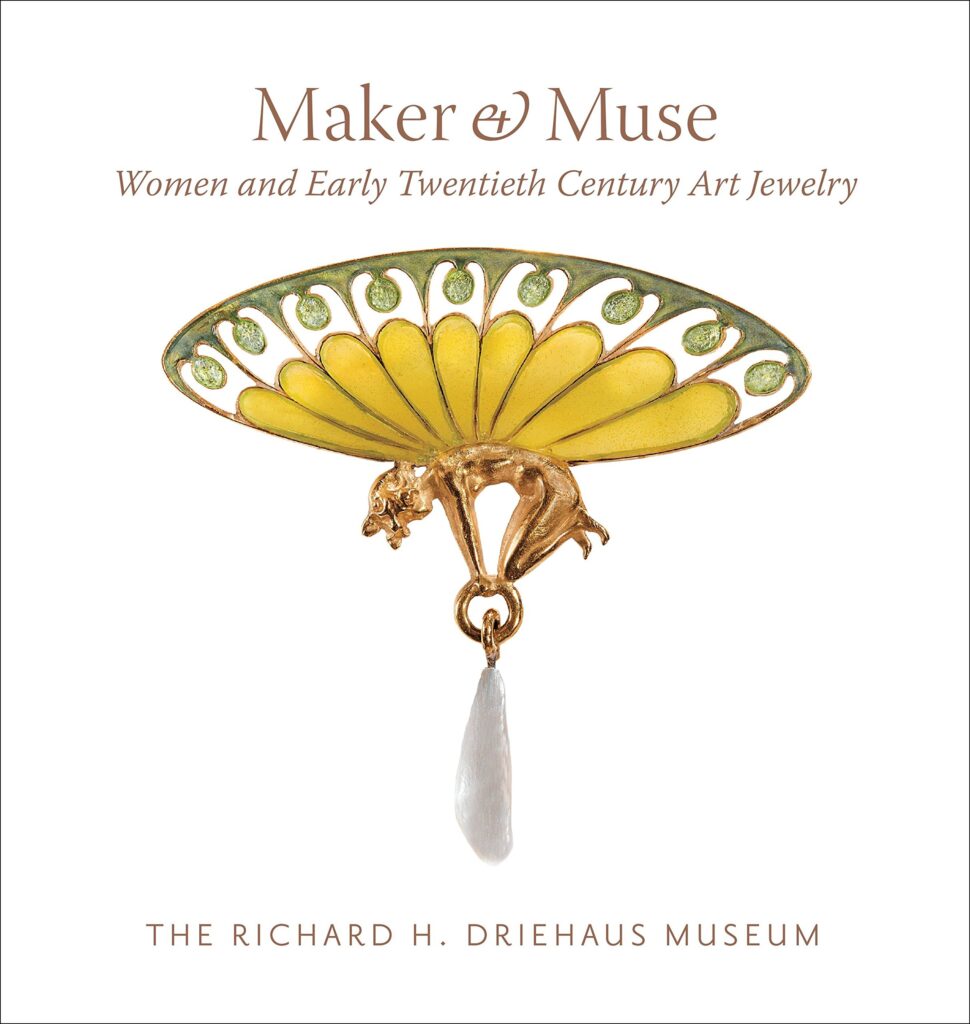
‘Maker and Muse’ was an exhibition at the Richard H. Driehaus museum, telling the story of women in jewellery in the early twentieth century. The essays in the book cover the Arts and Crafts movement in Britain and America, Art Nouveau in Europe and the American art jewellery of Louis Comfort Tiffany. Interesting and accessible text is supported by excellent photography.
The new jewelry: trends and traditions – Peter Dormer and Ralph Turner
Thames and Hudson, second edition 1994
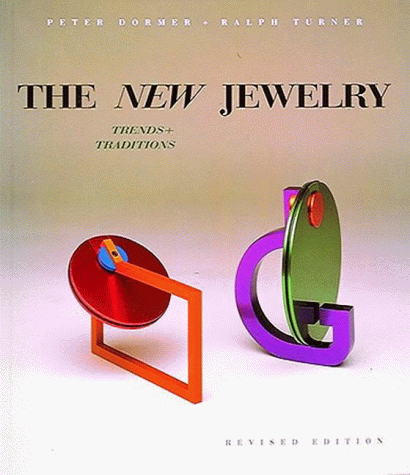
In the 1960s, jewellery took a sudden turn towards modernity. ‘The New Jewelry’ by Peter Dormer and Ralph Turner charts the rise of studio and artist jewellers in the 1980s and 1990s, looking at invention in design and materials. It’s divided into three sections which cover abstract jewellery, contemporary figurative jewellery and radical jewellery which seeks to challenge the status quo.
Women jewellery designers – Juliet Weir de la Rochefoucauld
ACC, 2022

This gorgeously produced book charts the achievements of women jewellery designers from the early twentieth century to the present day. Famous names like Suzanne Belperron and Coco Chanel are joined by less known but fascinating makers, supported by beautiful object photography and contextual images.
Further reading
If you’re interested in brooches, here is a suggested bibliography.
For more on rings, there is a list here.
Five great books on sentimental jewellery here.